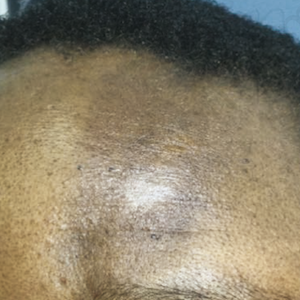En coup de sabre morphea: an uncommon condition in Africa
 Smart Citations
Smart CitationsSee how this article has been cited at scite.ai
scite shows how a scientific paper has been cited by providing the context of the citation, a classification describing whether it supports, mentions, or contrasts the cited claim, and a label indicating in which section the citation was made.
The term en coup de sabre morphea refers to a lesion of linear morphea typically located in the frontoparietal scalp and/or the paramedian forehead, often resembling a strike with a sword. In literature, en coup de sabre morphea, and en coup de sabre scleroderma are terms used interchangeably and synonymously. Due to the rarity of this condition, treatment is largely based on case report series, leaving much room for speculation in terms of drugs of choice, duration of treatment, and dosages. Although it typically leaves behind notable and often permanent skin pigmentary changes and indentation of the affected areas, this condition usually remits spontaneously, even in the absence of an active form of treatment. The disease severity and prognosis vary according to the subtype: circumscribed morphea has a generally more benign course when compared with linear scleroderma and generalized morphea.





 https://doi.org/10.4081/dr.2022.9537
https://doi.org/10.4081/dr.2022.9537






